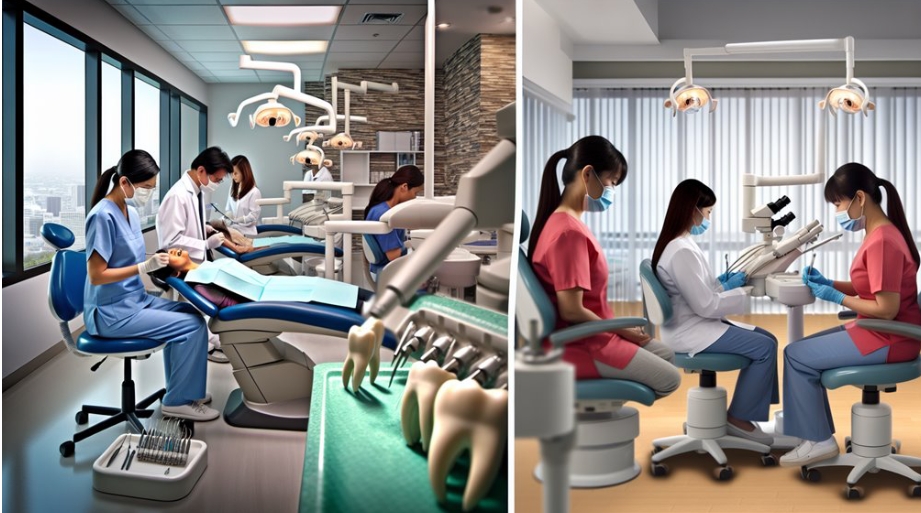When you consider entering an endodontic practice, you’ll face a fundamental decision: partnership or solo practice. Each model creates distinctly different professional experiences that extend far beyond simple financial arrangements. Partners share resources and responsibilities but sacrifice some autonomy, while solo practitioners maintain complete control but shoulder all burdens alone. This structural choice influences everything from your technology access and treatment protocols to your work-life balance and long-term career satisfaction. The implications will shape your daily professional reality for years to come.
Financial Structure: Investment Requirements and Income Potential
Numerous financial considerations differentiate endodontic partnerships from solo practices, creating distinct economic profiles for each practice model. Endodontics partners typically share equipment financing burdens, reducing individual capital expenditure while enabling investment in advanced technology that solo practitioners might find prohibitively expensive.
Income potential varies significantly between models. Partnerships offer revenue diversification through expanded service hours and complementary specializations. You’ll potentially generate higher collective revenue while distributing overhead costs across multiple practitioners.
Solo practitioners retain complete financial control but shoulder all startup costs and operational expenses independently. Your equipment financing options may be more limited, though you’ll benefit from streamlined decision-making and direct profit allocation without partnership negotiations.
Patient Care Models and Treatment Protocols
While practice structures may differ significantly, patient care models in endodontics fundamentally reflect the organizational dynamics of partnerships versus solo practices. Solo practitioners typically maintain consistent communication styles with patients, offering personalized education approaches tailored to individual needs.
In contrast, partnerships must establish standardized treatment protocols to ensure uniformity across multiple providers.
Partners benefit from collaborative case reviews and shared expertise, which can enhance complex treatment planning. However, they must carefully coordinate patient handoffs to prevent information gaps. Solo practitioners enjoy autonomous decision-making but lack immediate peer consultation.
Both models can deliver excellent care when properly implemented, though with distinct operational frameworks.
Work-Life Balance and Schedule Flexibility
Work-life balance and schedule flexibility represent critical differentiating factors between partnership and solo practice models in endodontics.
In a partnership, you’ll benefit from distributed on-call rotations and coverage during absences, allowing for predictable time off. Partners create a supportive environment where colleagues share emergency responsibilities and vacation coverage.
Solo practitioners maintain complete schedule autonomy but face continuous patient responsibility. Without built-in coverage, you’ll arrange external solutions for absences.
Team collaboration in partnerships facilitates workload distribution, reducing burnout risk. However, this requires schedule coordination with partners, whereas solo practitioners make independent scheduling decisions without consultation, trading isolation for autonomy.
Decision-Making Authority and Practice Management
Decision-making authority represents one of the fundamental distinctions between partnership and solo practice models in endodontic practice management. As a solo practitioner, you’ll maintain complete autonomy over clinical protocols, equipment purchases, and staffing decisions. You’ll determine your compensation structure independently, without compromise.
In partnerships, you’ll navigate shared governance systems where major decisions require consensus. While this reduces individual control, it distributes responsibility and creates built-in accountability. Your compensation structure typically follows established partnership agreements, often tied to productivity metrics.
Partnership models also provide defined career advancement opportunities through senior partnership tracks, which aren’t available when practicing alone.
Risk Distribution and Liability Considerations
Although each practice model carries inherent risks, partnerships and solo practices distribute these risks in fundamentally different ways.
Partnership structures offer significant advantages through diluted liability exposure, with multiple practitioners sharing potential financial damages from malpractice claims.
You’ll find partnerships typically establish cost sharing arrangements for malpractice insurance premiums, enabling access to more comprehensive coverage at lower individual costs. These arrangements often include unified defense strategies when facing litigation.
Solo practitioners, conversely, bear full liability exposure individually. While maintaining complete control over risk management protocols, they face heightened vulnerability to catastrophic financial impact from adverse events without partners to distribute these burdens.
Technology Integration and Resource Allocation
Significant capital investments in digital technology represent a defining factor differentiating partnership models from solo endodontic practices. As a partner, you’ll spread costs across multiple practitioners while gaining access to advanced imaging systems and treatment tools that might otherwise remain financially prohibitive.
Partnership structures facilitate superior data management capabilities through shared investment in integrated software platforms. You’ll notice streamlined information flow between practitioners, supporting consistent procedure standardization across the practice. Resource allocation becomes more efficient as partners coordinate equipment usage and maintenance schedules.
Solo practitioners must carefully prioritize technology acquisitions, often making difficult choices between competing needs while shouldering the entire financial burden independently.


